Ancient Egypt: Daily Life Beyond the Pyramids

When we think of ancient Egypt, towering pyramids, golden treasures, and the legendary pharaohs immediately spring to mind. But for the millions of ordinary Egyptians who lived along the banks of the Nile, life was not measured in colossal monuments or elaborate tombs. It was shaped by the rhythms of the river, the demands of the fields, the bustle of the marketplace, and the rituals of family and faith.
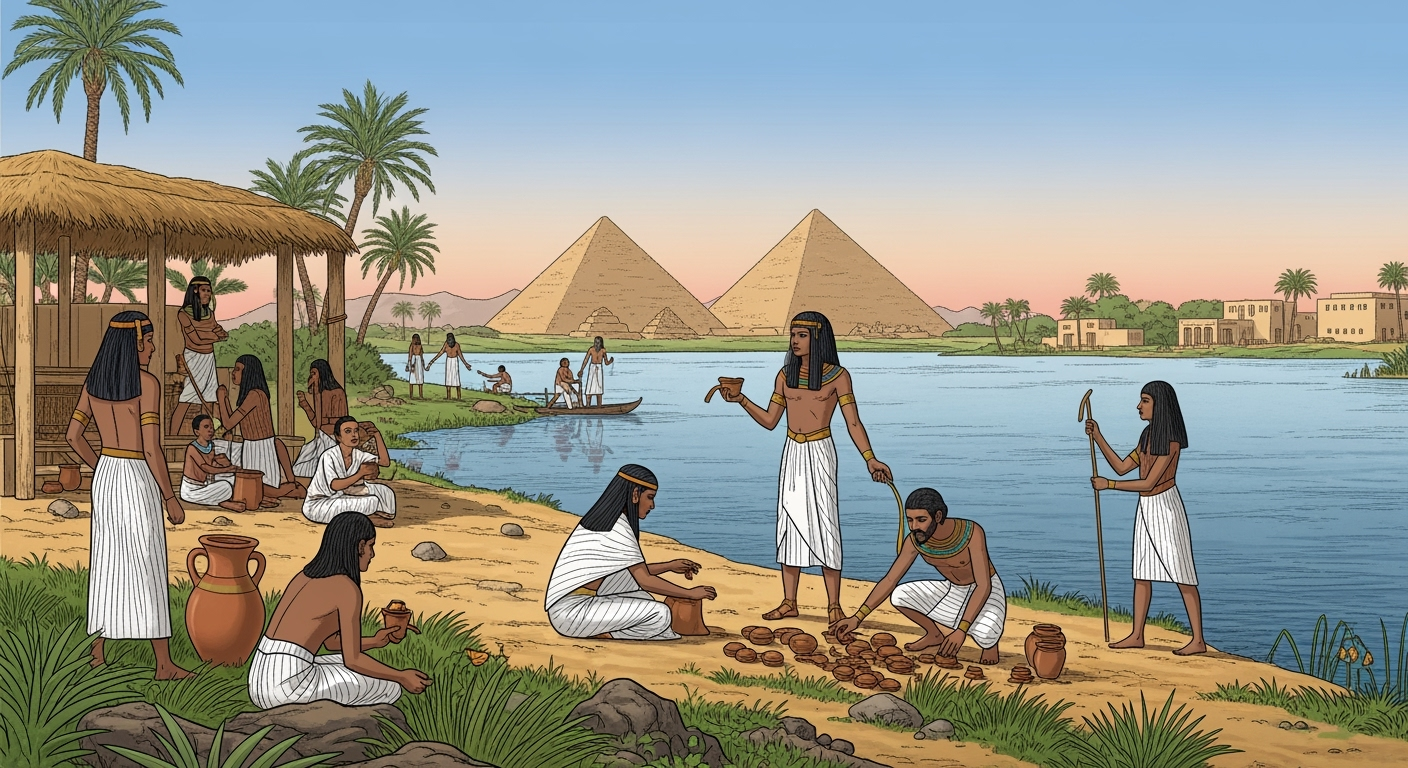
To step into ancient Egypt is to glimpse a society that was both practical and deeply spiritual, where everyday life unfolded with surprising similarities, and striking differences, to our own.
The Nile: Lifeblood of a Civilization

Life in ancient Egypt revolved around the Nile River. Every year, its seasonal flooding deposited nutrient-rich silt onto the fields, ensuring abundant crops. Farmers relied on this natural irrigation system to cultivate wheat, barley, flax, and vegetables. Without the Nile’s annual flood, Egypt would have been little more than desert.
Most Egyptians were farmers who worked long days tending fields or herding livestock. They used simple wooden plows, sickles, and hoes. Oxen were prized for heavy work, while donkeys carried goods across dusty tracks. The harvest season was crucial; grain was stored in communal silos and redistributed as wages, taxes, and trade. For the majority of the population, the success of the crops was quite literally the difference between feast and famine.
Homes and Family Life
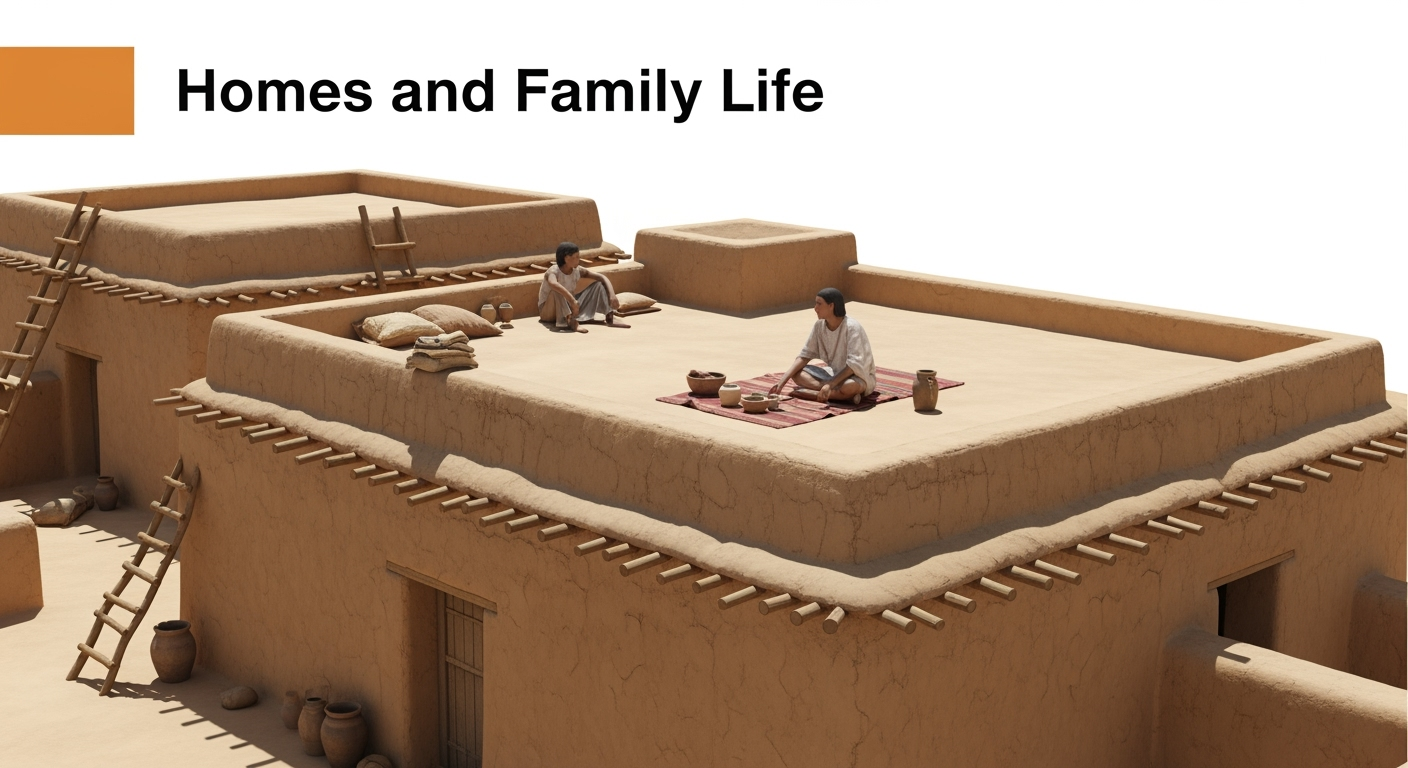
The average Egyptian home was a modest, mudbrick structure. These bricks, sun-dried from Nile mud, were cheap and easy to make, though they crumbled quickly in the rain. Roofs were flat and often doubled as extra living space, where families might sleep on hot nights or store goods in clay jars. Wealthier Egyptians, such as scribes and officials, lived in larger, multi-room houses with painted walls, courtyards, and even small gardens.
Family life was central to Egyptian society. Marriages were often arranged but not without affection. Women held a relatively high status compared to other ancient cultures. They could own property, manage businesses, and initiate divorce. Children were cherished, and toys made of wood, clay, or string have been found in tombs, proof that play was an important part of growing up.
Food was shared communally, with meals often consisting of bread, beer, onions, and fish. The bread was coarse and sometimes gritty with sand, wearing down teeth over time. Wealthier households enjoyed meat, honey, fruits, and wine imported from abroad.
Work and Occupations
Not everyone was a farmer. Ancient Egypt had a thriving economy that required a wide range of skills. Craftsmen and artisans produced everything from pottery and furniture to intricate jewelry and statues. Their work was highly valued and often supported the religious and political life of the nation.
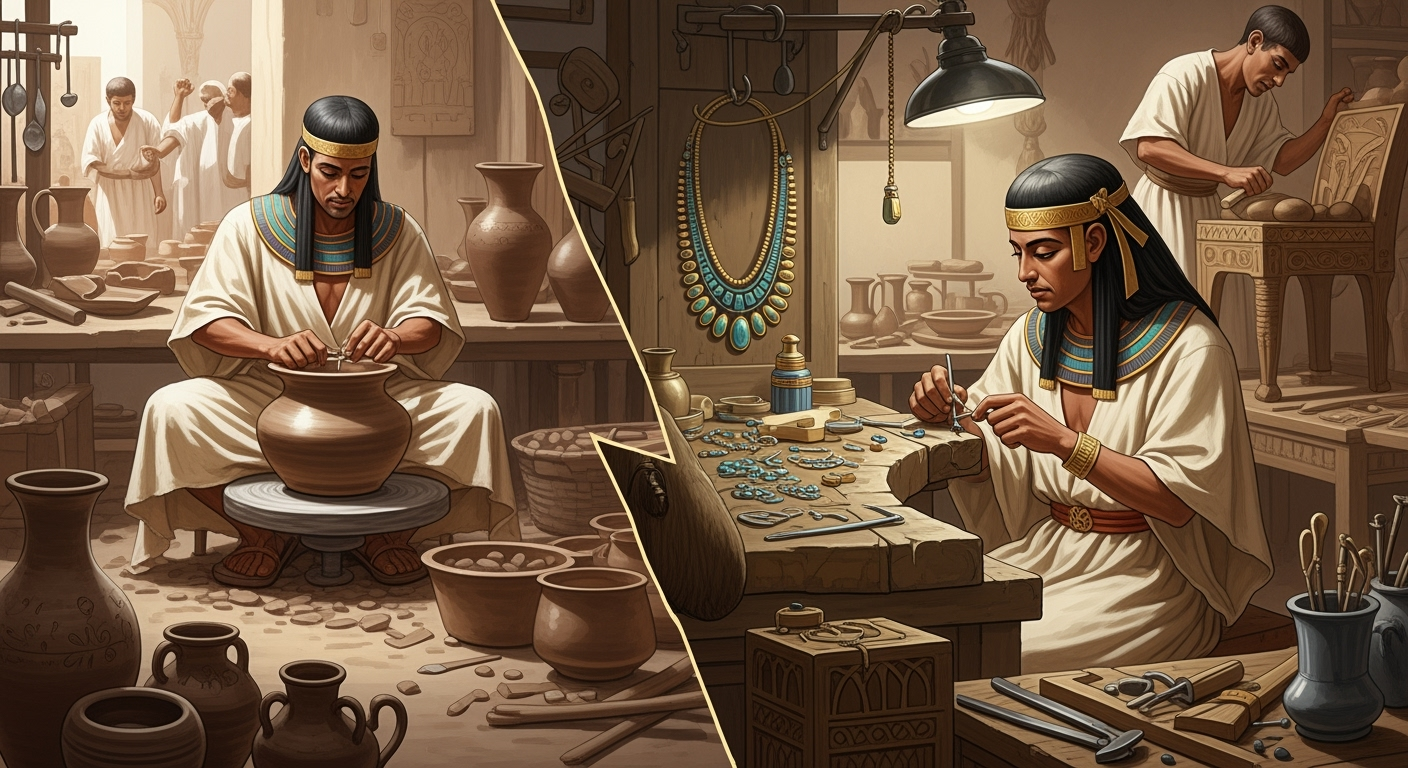
Scribes held one of the most prestigious jobs. Literacy was rare, and scribes were essential for recording taxes, legal documents, and religious texts. Training was rigorous, but the position came with respect and financial stability.
Merchants traveled up and down the Nile, trading grain, papyrus, and linen for goods from Nubia, the Levant, and even farther afield. Soldiers, too, played an important role, defending Egypt’s borders and sometimes bringing back wealth from military campaigns.
Slavery existed, though it was not the backbone of the economy as in later societies. Slaves were often prisoners of war, but many could earn freedom, and some worked as household servants or laborers.
Clothing and Appearance

In the heat of Egypt, fashion was simple but elegant. Men typically wore short linen kilts, while women wore long, form-fitting linen dresses. Linen, made from the flax plant, was cool and practical, though higher-quality linen was reserved for the wealthy.
Cosmetics were widespread. Both men and women used kohl eyeliner not only for beauty but also to protect their eyes from the sun’s glare and reduce infection. Perfumed oils kept skin from drying in the arid climate. Wigs were popular, made from human hair or plant fibers, often scented with cones of perfumed wax that slowly melted in the heat. Appearance mattered; how one dressed and groomed reflected social status and piety.
Religion in Daily Life
Religion was woven into every aspect of Egyptian life. The gods were believed to control the natural world in every aspect, from the flooding of the Nile, the fertility of crops, even the rising of the sun. Families maintained small household shrines, while temples served as the center of community life.
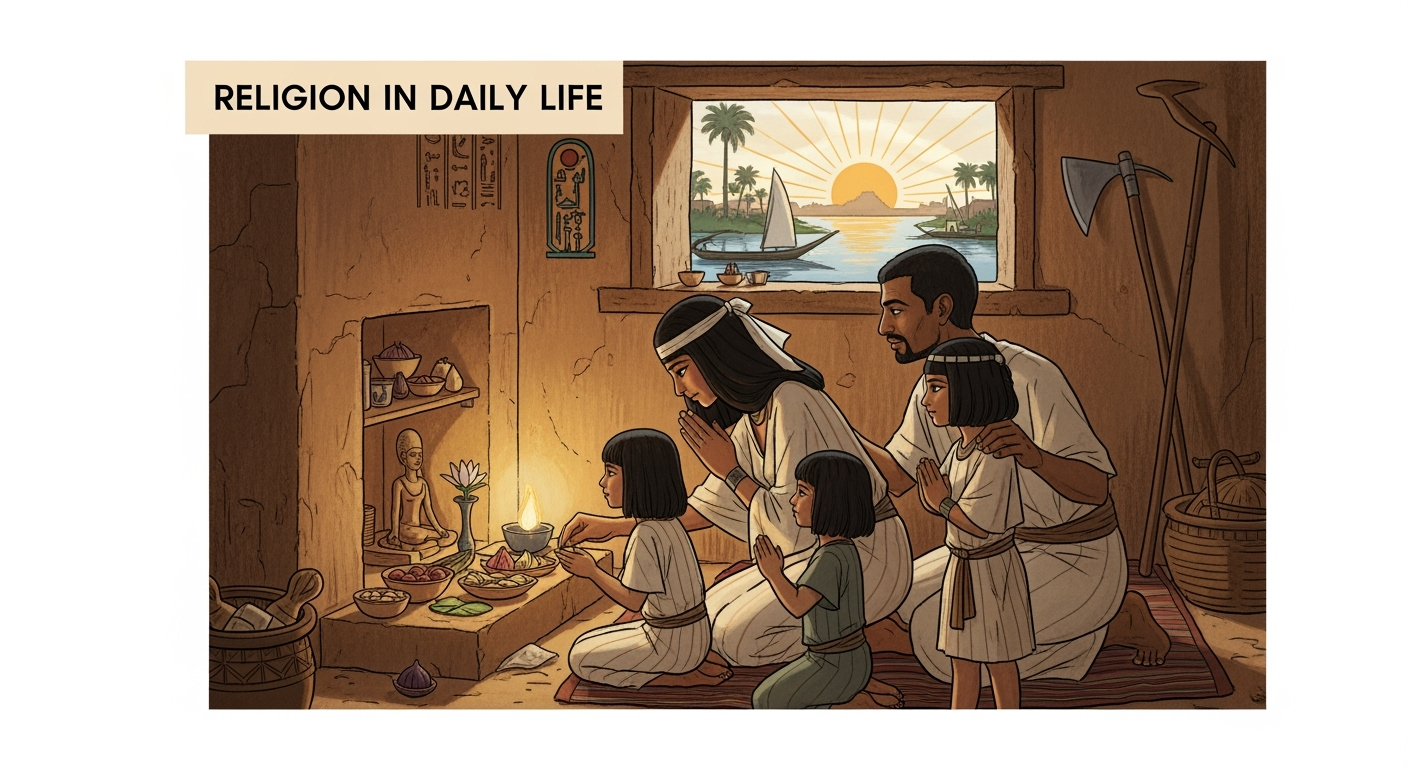
Major gods such as Ra, Isis, Osiris, and Horus were honored with offerings and prayers. Amulets shaped like scarabs, ankhs, or the Eye of Horus were worn for protection. Festivals provided a chance to celebrate, feast, and reaffirm the community’s bond with the divine.
Death and the afterlife also shaped daily life. Egyptians believed in preparing for eternity, even in small ways. Ordinary people who could not afford elaborate tombs still hoped for a blessed afterlife by living virtuously and making offerings.
Leisure and Entertainment

Despite hard work, Egyptians found time for recreation. Board games such as Senet were hugely popular and have been discovered in many tombs. Music and dance were part of celebrations and religious rituals. Flutes, harps, and tambourines filled the air during festivals, while professional dancers entertained at banquets.
Sports and physical activity were common, too. Children wrestled or swam in the Nile, while adults enjoyed hunting, fishing, and archery. For the wealthy, hunting birds or gazelles was both recreation and a display of status.
Medicine and Health
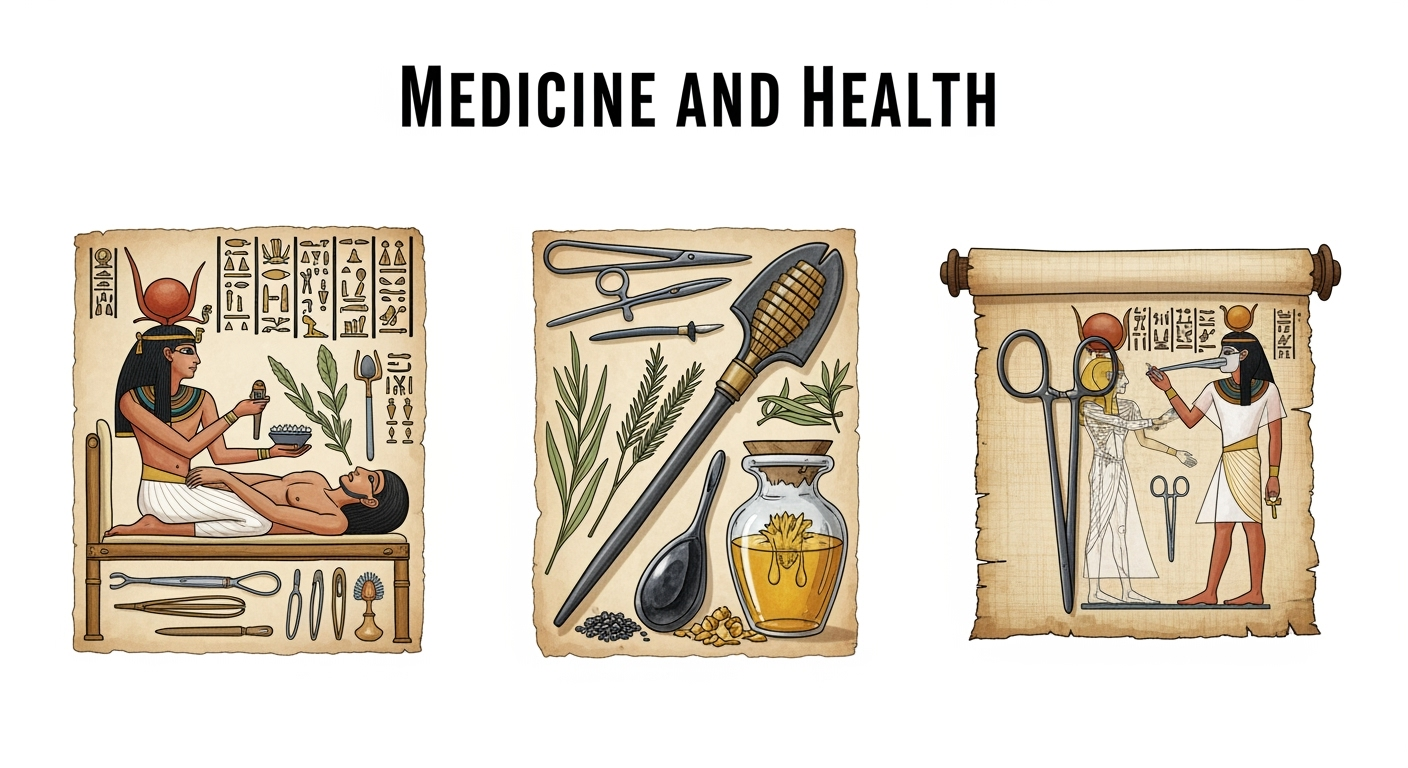
Ancient Egyptians were surprisingly advanced in medicine. Papyrus scrolls reveal knowledge of herbal remedies, surgical practices, and even dentistry. They used honey as an antiseptic and willow bark to reduce pain, similar to modern aspirin.
However, life expectancy was short by today’s standards, with many people living only into their 30s or 40s. Harsh working conditions, infectious diseases, and accidents took their toll. Yet the Egyptians valued cleanliness, regularly bathing in the Nile and shaving body hair to prevent lice and infection.
Education and Learning
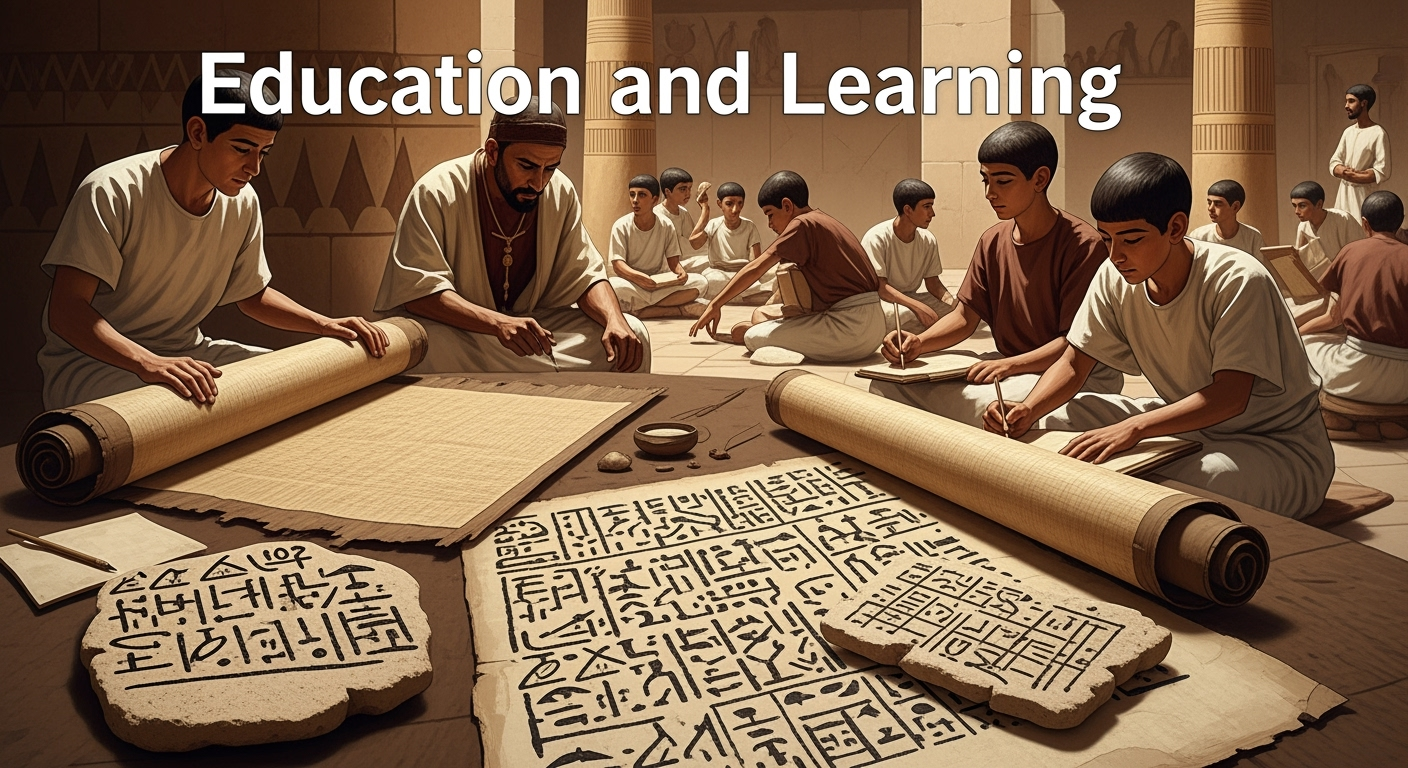
Formal education was reserved mainly for boys of wealthier families, destined to become scribes, priests, or officials. Lessons focused on reading, writing, mathematics, and moral teachings. Papyrus scrolls and ostraca (potsherds used for practice) show the laborious exercises of young scribes.
For most children, education came in the form of apprenticeship. Sons learned trades from their fathers, while daughters learned household management from their mothers. Still, literacy remained rare, ensuring the prestige of those who could read and write.
The Legacy of Everyday Egyptians
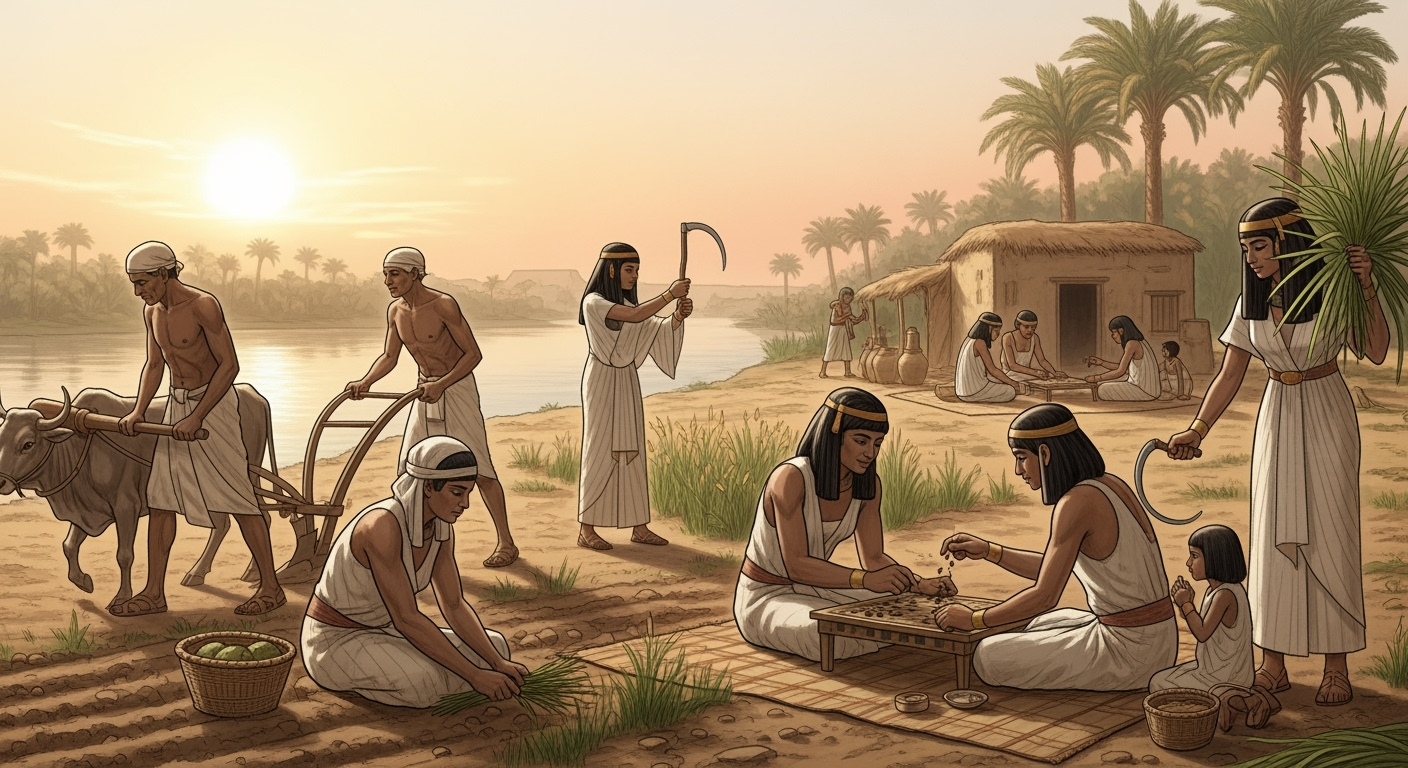
While the grandeur of the pyramids and temples captures global attention, it is the lives of ordinary Egyptians that breathe humanity into this ancient civilization. Their struggles with farming, their laughter over board games, their devotion to family and gods; all of these details paint a vivid portrait of a people both ancient and relatable.
Through archaeological discoveries including bread ovens, children’s toys, workmen’s graffiti, we glimpse a society that balanced survival with joy, tradition with innovation. Ancient Egyptians were not just pyramid builders or subjects of mighty pharaohs; they were parents, workers, worshippers, and dreamers.
And perhaps that is their greatest legacy: reminding us that even thousands of years ago, across continents and cultures, daily life was filled with the same rhythms of hope, struggle, and celebration that still define us today.
HistoryReveal is your guide to understanding the past in ways that connect to the present. From ancient empires to modern movements, we bring history to life, one story at a time.
Disclaimer
This article is for educational and informational purposes only. While HistoryReveal.com strives for accuracy, historical interpretation may vary, and readers are encouraged to consult additional sources for deeper study.